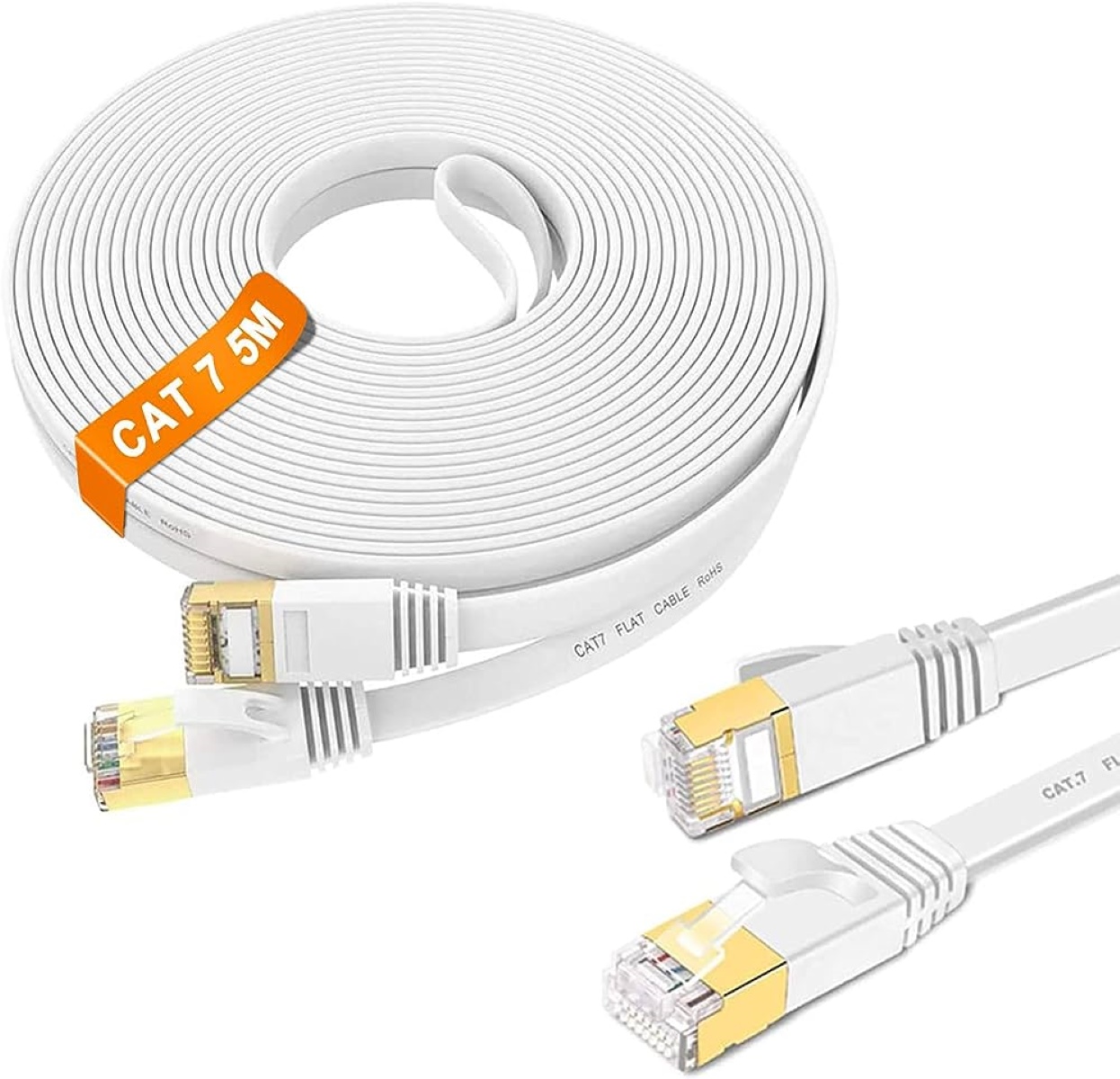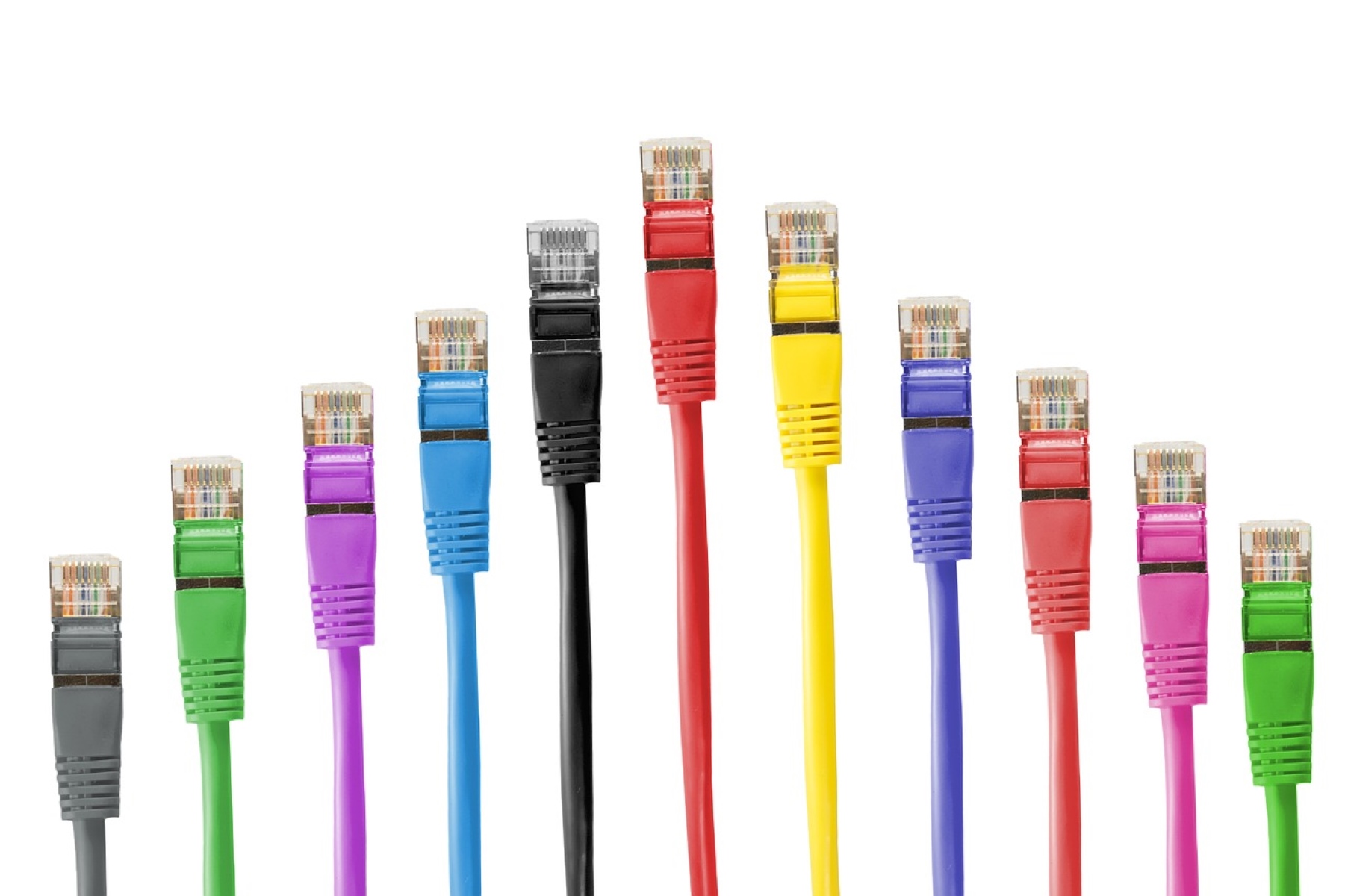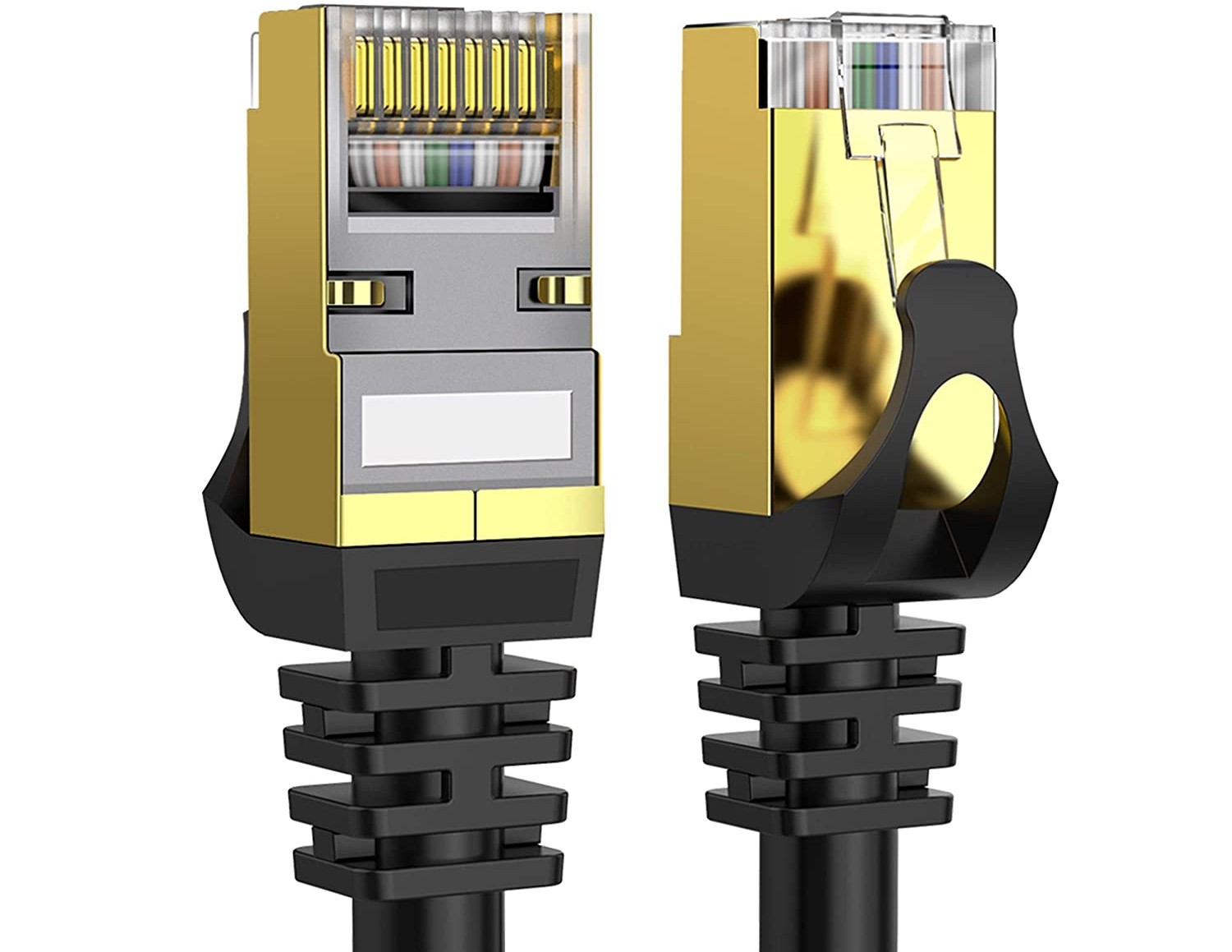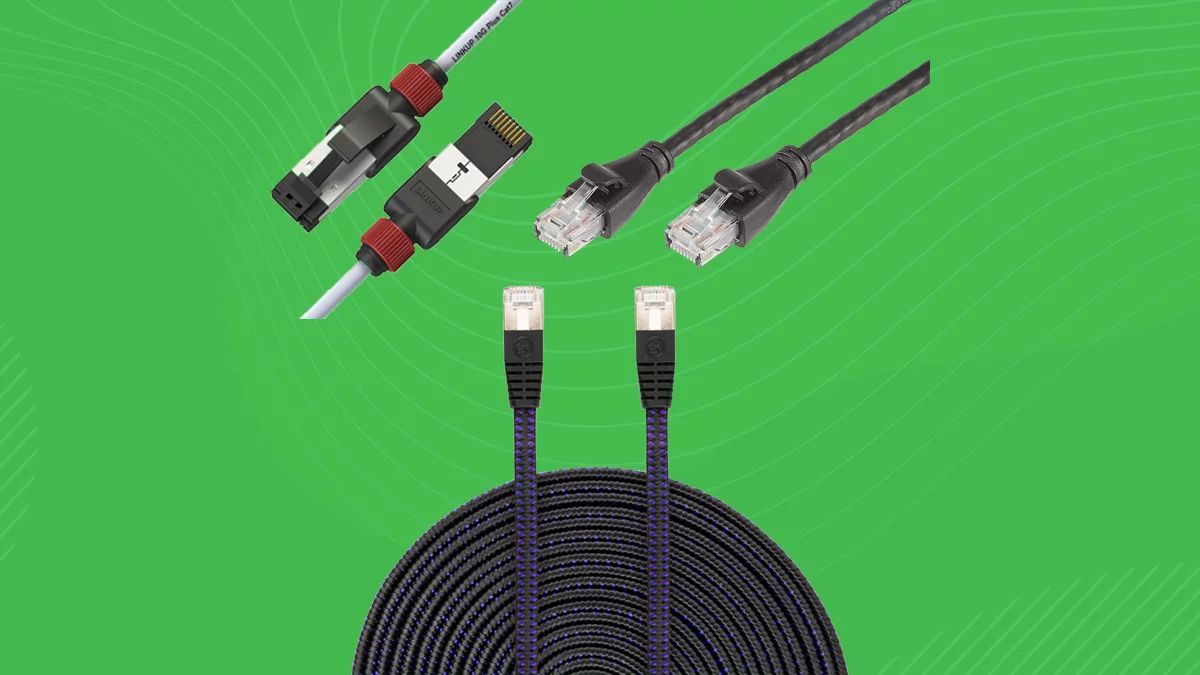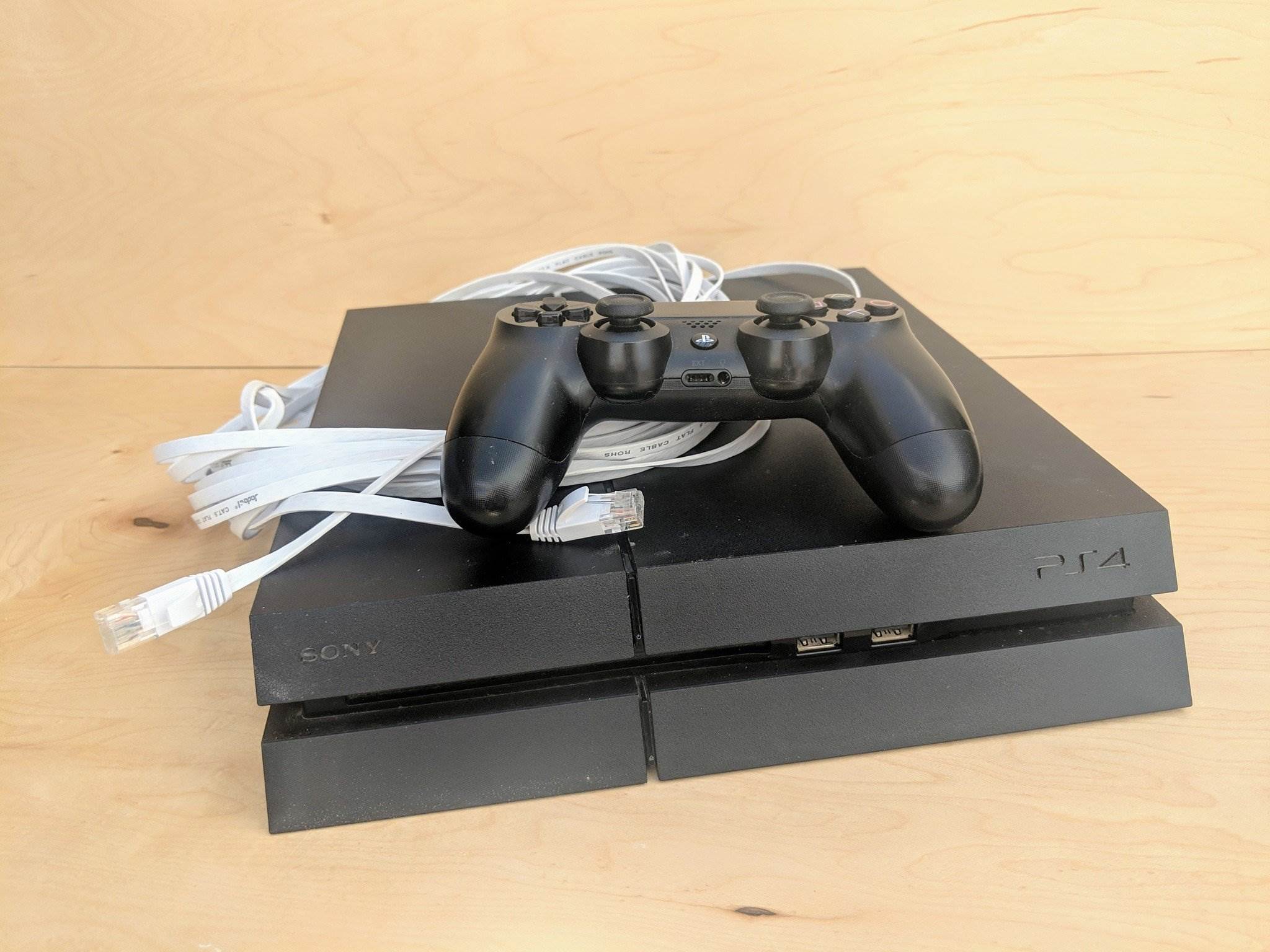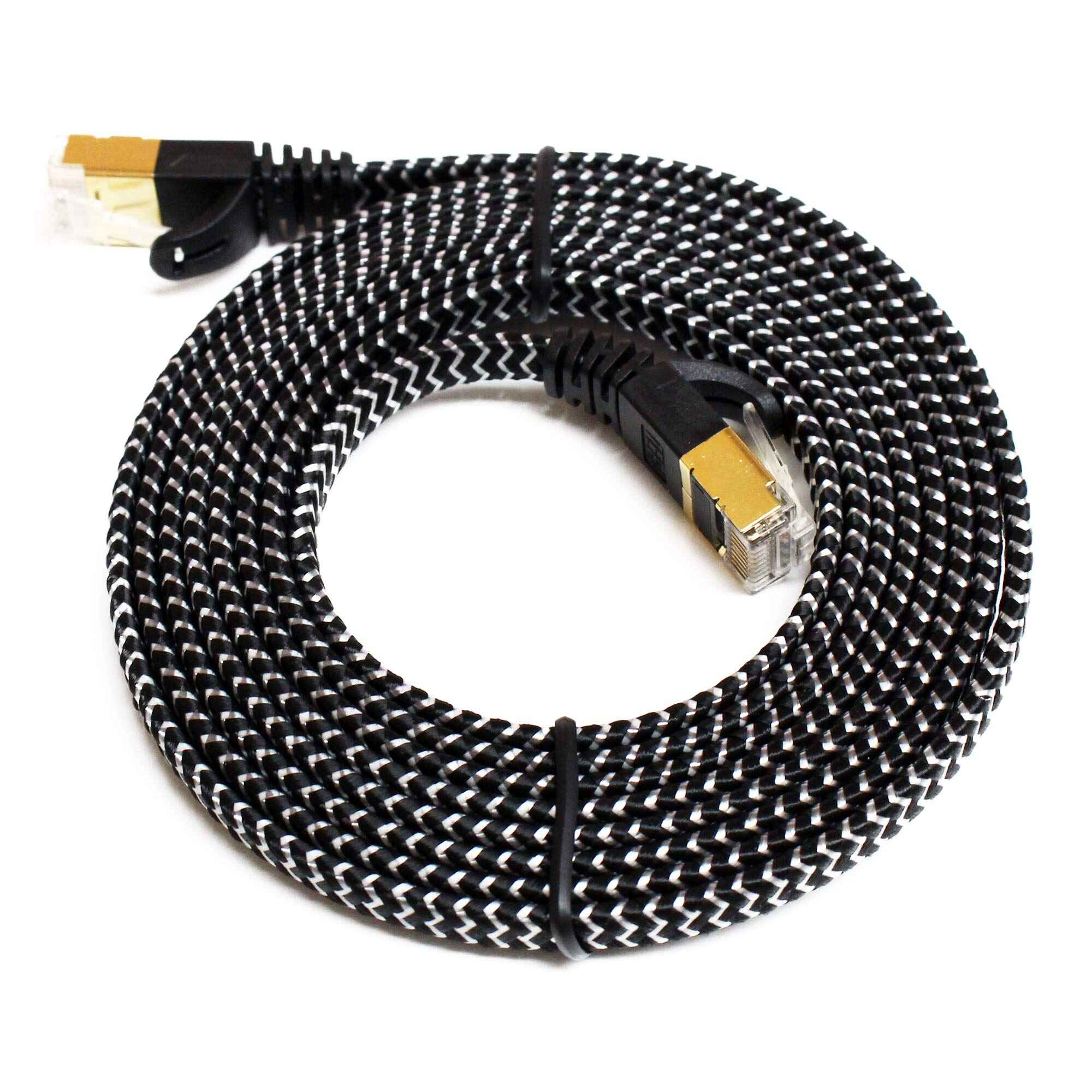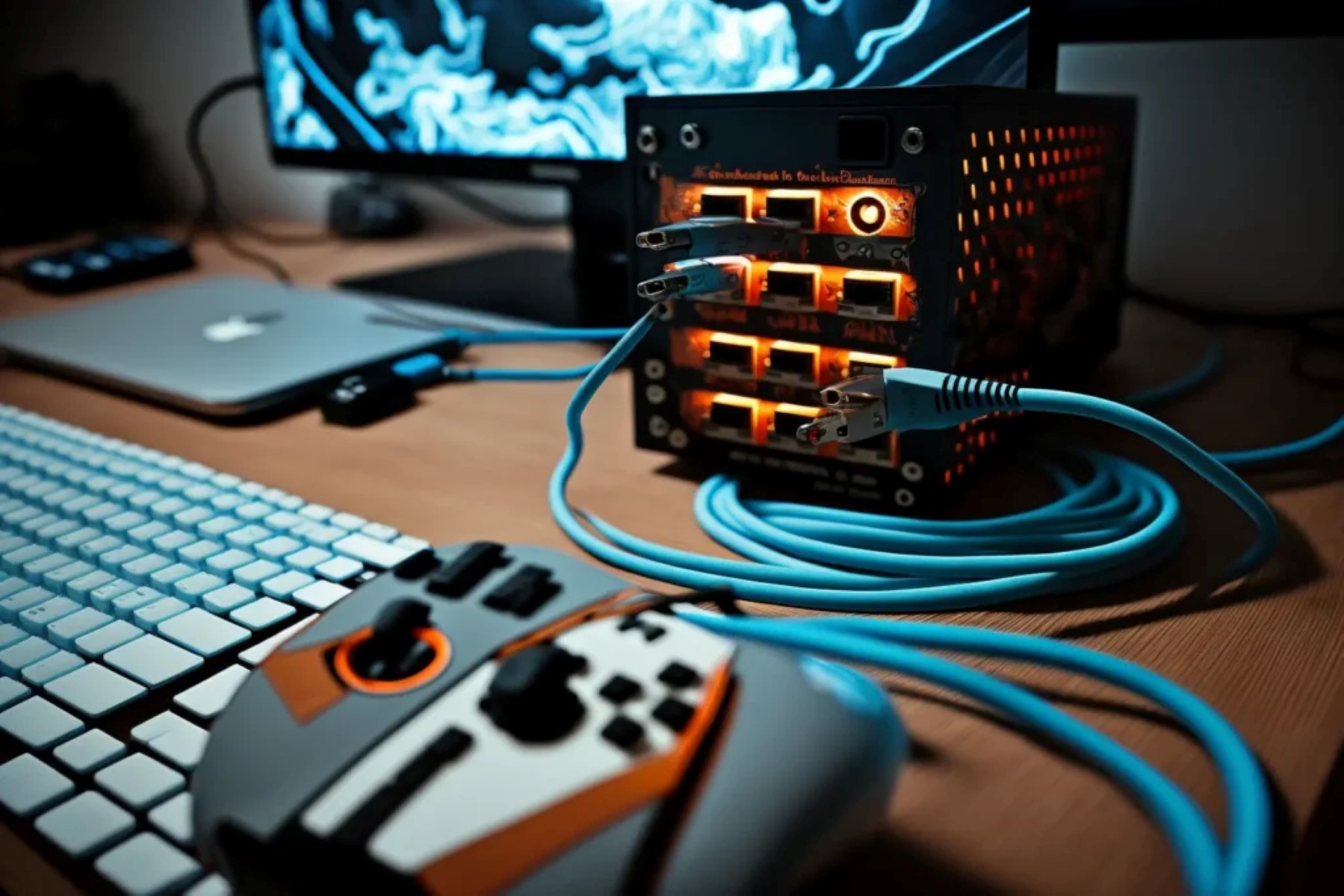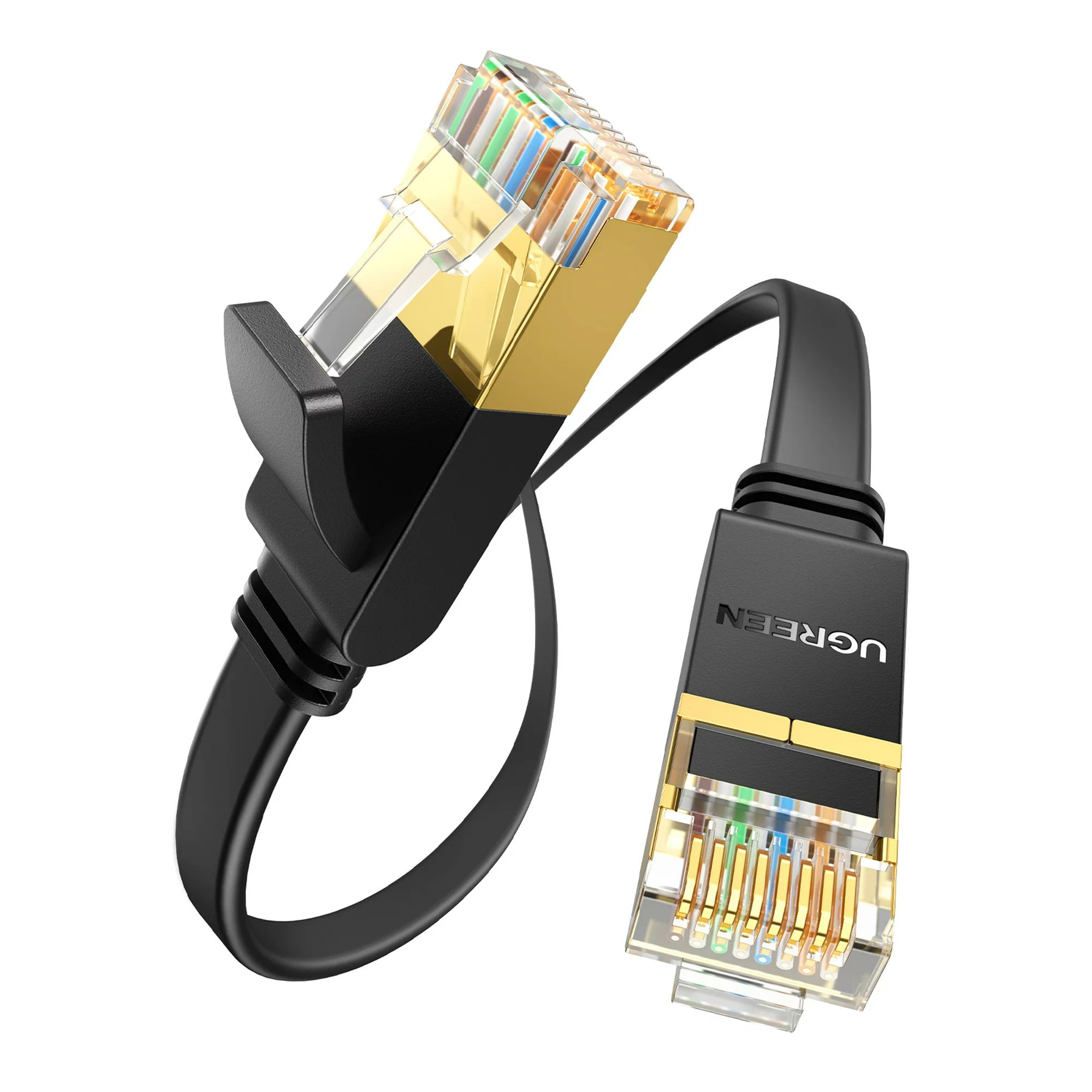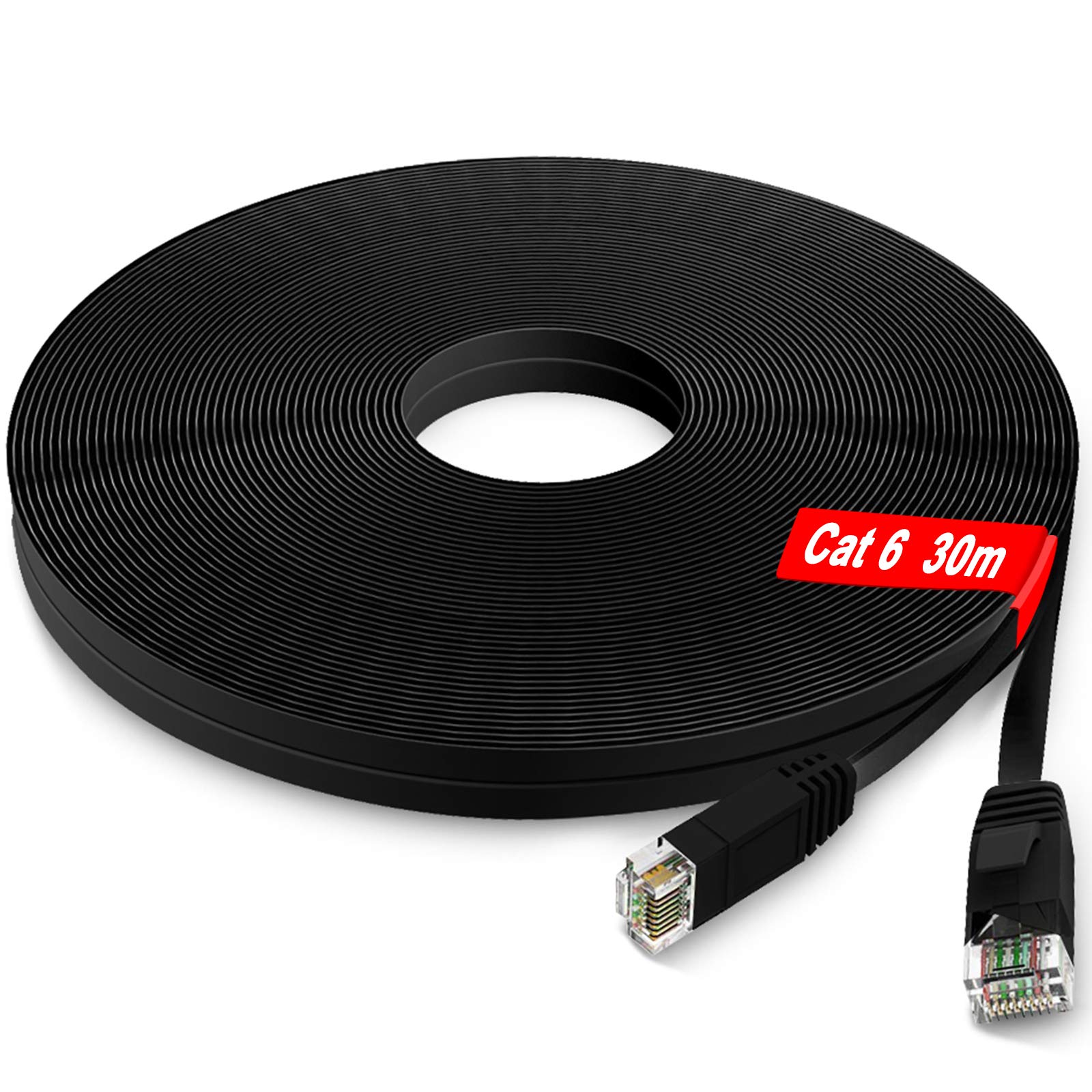Introduction
The world is becoming increasingly interconnected, and with the rise of smart homes, online gaming, 4K streaming, and the Internet of Things (IoT), the demand for faster and more reliable internet connectivity is higher than ever before. That’s where Cat 7 Ethernet cables come into the picture.
Cat 7 Ethernet cables, also known as Category 7 cables, are designed to deliver smooth, high-speed internet connections for a wide range of applications. Whether you’re a gamer, a tech enthusiast, or a professional working from home, upgrading to a Cat 7 Ethernet cable can significantly improve your network performance.
But what exactly is Cat 7 Ethernet cable, and what sets it apart from other types of Ethernet cables? In this article, we will explore the features, advantages, and installation process of Cat 7 Ethernet cables, as well as guide you on how to choose the right one for your needs.
Cat 7 Ethernet cables are a step up from their predecessors, Cat 5 and Cat 6 cables, in terms of speed and reliability. They are designed to support bandwidths of up to 10 Gbps (gigabits per second) and are capable of transmitting data over distances of 100 meters, which is more than enough for most residential and commercial setups. These cables utilize twisted copper pairs to reduce interference and ensure stable performance, even in high-electromagnetic interference (EMI) environments.
One of the key advantages of Cat 7 Ethernet cables is their ability to future-proof your network. With the rapid advancement in technology, it’s crucial to invest in cables that can handle the ever-increasing data demands. Cat 7 cables provide a significant boost in bandwidth, making them ideal for high-bandwidth applications, such as streaming 4K videos, online gaming, and data-intensive tasks.
Moreover, Cat 7 Ethernet cables offer better shielded protection, thanks to their individual shielded twisted pairs (STP) design. This shielding ensures minimal crosstalk, decreases signal loss, and provides enhanced transmission performance. The result is a more reliable and stable internet connection, even in environments with high levels of electrical noise.
In the following sections, we will delve deeper into the features, benefits, and installation process of Cat 7 Ethernet cables. Whether you’re setting up a home network or upgrading your office infrastructure, understanding the advantages of Cat 7 cables will help you make an informed decision. So, let’s explore the world of Cat 7 Ethernet cables and discover why they are the future of high-speed networking.
What is Cat 7 Ethernet Cable?
Cat 7 Ethernet cable, also known as Category 7 cable, is a type of network cable used to establish wired internet connections. It is an upgraded version of Cat 6 Ethernet cable, designed to meet the increasing demand for faster data transfer rates and improved network performance.
One of the defining features of Cat 7 Ethernet cable is its capability to support higher bandwidths and deliver data at faster speeds. It is designed to support data transmission rates of up to 10 Gbps (gigabits per second), which is ten times faster than its predecessor, Cat 6. This speed makes Cat 7 Ethernet cable ideal for high-bandwidth applications such as video streaming, online gaming, and large file transfers.
Another significant feature of Cat 7 Ethernet cable is its enhanced shielding. It is constructed with individually shielded pairs, which are wrapped and then shielded as a whole. This shielding provides better protection against external electromagnetic interference (EMI) and crosstalk, ensuring a reliable and stable internet connection. The shielding also reduces signal loss, allowing for longer transmission distances without compromising performance.
Furthermore, Cat 7 Ethernet cable utilizes twisted pair construction, where each pair of wires is twisted together. This twisting helps to cancel out electromagnetic interference and crosstalk, further enhancing the cable’s performance. The twisted pairs are then enclosed in a protective jacket, providing physical protection.
It is essential to note that Cat 7 Ethernet cable is backward compatible with older Ethernet standards, such as Cat 6, Cat 5e, and Cat 5. This means that you can use Cat 7 cables in networks that have devices using these older standards. However, it’s important to match the cable with the appropriate connectors and networking equipment to achieve the best performance.
In terms of physical characteristics, Cat 7 Ethernet cable typically has a thicker and bulkier design compared to Cat 6 and Cat 5 cables. This is due to the additional shielding and thicker conductors required to support the higher data rates. The cable is available in various lengths, and you can choose between shielded or unshielded options depending on your specific requirements.
In summary, Cat 7 Ethernet cable is a high-performance network cable designed to deliver fast and reliable wired internet connections. Its ability to support high bandwidths, provide enhanced shielding against external interference, and its backward compatibility with older Ethernet standards make it an excellent choice for demanding network applications. Whether you’re a gamer, a content creator, or a professional requiring a reliable and high-speed connection, Cat 7 Ethernet cable can help meet your networking needs.
Advantages of Cat 7 Ethernet Cable
Cat 7 Ethernet cable offers several advantages over other types of Ethernet cables, making it a preferred choice for those seeking high-speed and reliable internet connections. Here are some key advantages of Cat 7 Ethernet cable:
- Higher Bandwidth: Cat 7 Ethernet cable is designed to support higher bandwidths, allowing for faster data transfer rates. With a maximum bandwidth of 10 Gbps, Cat 7 can handle data-intensive tasks such as streaming 4K videos, online gaming, and large file transfers without experiencing performance bottlenecks.
- Enhanced Performance: The individual shielding of twisted pairs in Cat 7 Ethernet cable reduces signal interference and crosstalk, resulting in a more stable and reliable connection. This enhanced performance is especially beneficial in environments with high levels of electromagnetic interference (EMI), ensuring uninterrupted and smooth data transmission.
- Future-Proofing: Cat 7 Ethernet cable is designed to meet the increasing demands of modern networks. Investing in Cat 7 ensures that your network infrastructure is ready to handle future advancements in technology and higher bandwidth requirements. By future-proofing your network, you avoid the need for costly infrastructure upgrades down the line.
- Long Transmission Distances: Cat 7 Ethernet cable can transmit data over longer distances without significant signal degradation. With a maximum range of 100 meters, Cat 7 is suitable for both residential and commercial applications, including larger homes, offices, data centers, and server rooms.
- Wide Compatibility: Cat 7 Ethernet cable is backward compatible with previous Ethernet standards such as Cat 6, Cat 5e, and Cat 5. This means that you can replace your existing cables with Cat 7 without the need to upgrade your networking equipment. It is important to note that while the cable is compatible, the maximum data transfer speeds will be limited to the capabilities of the lowest standard in use.
- Secure Connections: The shielding in Cat 7 Ethernet cable provides additional protection against data leakage and electromagnetic interference. This added layer of security is particularly important in sensitive environments such as businesses or organizations that deal with confidential data.
Overall, the advantages of Cat 7 Ethernet cable make it a top choice for those seeking high performance and reliable network connections. Whether you’re a gamer, a professional requiring fast data transfer, or a homeowner with a need for seamless streaming, Cat 7 Ethernet cable provides the speed, stability, and future-proofing that today’s networks demand.
Features of Cat 7 Ethernet Cable
Cat 7 Ethernet cable comes with a range of features that make it stand out in terms of performance, reliability, and versatility. Here are some notable features of Cat 7 Ethernet cable:
- High-Speed Performance: Cat 7 Ethernet cable is designed to support data transfer rates of up to 10 Gbps (gigabits per second). This high-speed performance makes it ideal for demanding applications that require fast and reliable connectivity, such as online gaming, 4K video streaming, and large file transfers.
- Individual Shielded Twisted Pairs (STP): Cat 7 Ethernet cable features individually shielded twisted pairs, which are wrapped and then shielded as a whole. This shielding works to minimize crosstalk and external electromagnetic interference (EMI), resulting in a cleaner and more stable signal transmission. The individual shielding of twisted pairs also provides better performance in high-noise environments.
- Backward Compatibility: Cat 7 Ethernet cable is backward compatible with previous Ethernet standards, including Cat 6, Cat 5e, and Cat 5. This means that you can upgrade your network to Cat 7 without the need to replace your existing networking equipment. However, it’s important to note that the maximum data transfer speeds will be limited to the capabilities of the lowest standard in use.
- Twisted Pair Construction: The twisted pair construction of Cat 7 Ethernet cable further enhances its performance. This construction involves twisting each pair of wires together, which helps to cancel out electromagnetic interference and crosstalk. The twisted pairs are then enclosed in a protective jacket, providing physical protection and reducing the chances of signal degradation due to external factors.
- Extended Transmission Distance: Cat 7 Ethernet cable can transmit data over longer distances with minimal signal degradation. It has a maximum transmission distance of 100 meters, making it suitable for both residential and commercial applications, including larger homes, offices, and server rooms.
- Thicker and More Durable Design: Cat 7 Ethernet cable is designed with a thicker and more durable construction compared to other Ethernet cables. This design ensures better protection against external factors and reduces the risk of cable damage. The thicker design also provides better signal insulation and minimizes signal loss.
- Wide Range of Applications: Cat 7 Ethernet cable is suitable for a wide range of applications. It can be used in residential settings to improve the performance of home networks, as well as in commercial environments such as offices, data centers, and server rooms. Additionally, its high-speed capabilities make it an excellent choice for applications that require large data transfer rates and low latency.
These features make Cat 7 Ethernet cable a reliable and high-performance option for ensuring fast and stable internet connections. Whether you’re a gamer, a tech enthusiast, or a professional requiring high-bandwidth capabilities, Cat 7 Ethernet cable delivers the speed, reliability, and versatility needed to meet the demands of today’s network-intensive applications.
Comparison with Other Ethernet Cables
When it comes to choosing the right Ethernet cable for your networking needs, it’s essential to understand how Cat 7 Ethernet cable compares to other popular options such as Cat 6 and Cat 5e. Here’s a comparison of Cat 7 Ethernet cable with other Ethernet cables:
- Cat 6 Ethernet Cable: Cat 6 Ethernet cable is the predecessor to Cat 7 and offers a significant improvement over Cat 5e. While Cat 6 can support data transfer rates of up to 10 Gbps, like Cat 7, it does not have the same level of shielding. Cat 7 Ethernet cable has individually shielded twisted pairs (STP), providing better protection against external electromagnetic interference (EMI) and reducing crosstalk. This makes Cat 7 more reliable and suitable for high-noise environments.
- Cat 5e Ethernet Cable: Cat 5e Ethernet cable is the most widely used Ethernet cable in households and small businesses today. It can support data transfer rates of up to 1 Gbps, which is significantly lower than the speeds offered by Cat 7. Cat 5e also lacks the advanced shielding and performance capabilities of Cat 7. While Cat 5e may be sufficient for basic internet usage and everyday tasks, the higher performance and reliability of Cat 7 make it a better choice for demanding applications.
- Cat 8 Ethernet Cable: Cat 8 Ethernet cable is a newer and more advanced option compared to Cat 7. It offers faster data transfer rates of up to 40 Gbps and can support even higher frequencies than Cat 7. However, Cat 8 cables are more expensive and less commonly available compared to Cat 7. Unless you specifically require the higher speeds and are willing to invest in the additional cost, Cat 7 is a solid choice for most applications.
- Unshielded vs. Shielded: Both Cat 6 and Cat 7 Ethernet cables offer shielding to reduce interference and ensure better performance. However, Cat 7 Ethernet cable has an advantage with its individually shielded twisted pairs (STP), providing superior protection against external EMI and crosstalk. This makes Cat 7 more suitable for high-noise environments and scenarios where reliable and uninterrupted data transmission is essential.
- Future-Proofing: Cat 7 Ethernet cable has the advantage of future-proofing your network infrastructure. With its ability to support higher bandwidths and data transfer rates of up to 10 Gbps, Cat 7 can handle the demands of future technologies and applications. The backward compatibility of Cat 7 with older Ethernet standards also ensures that you can upgrade your network gradually without the need for immediate equipment replacement.
In summary, Cat 7 Ethernet cable offers significant advantages over Cat 6 and Cat 5e in terms of performance, shielding, and future-proofing. While Cat 8 Ethernet cable provides even faster speeds, Cat 7 is a more cost-effective option for most users. Ultimately, the choice between these cables depends on your specific needs, budget, and the level of performance required for your application. Whether you’re a home user, a small business, or an enterprise, Cat 7 Ethernet cable provides a reliable and high-performance solution for fast and stable network connections.
Installation and Use of Cat 7 Ethernet Cable
Installing and using Cat 7 Ethernet cable is relatively straightforward, and it follows similar principles to other Ethernet cables. Here’s a guide on how to install and use Cat 7 Ethernet cable:
- Plan Your Network: Before installing Cat 7 Ethernet cable, it’s essential to plan your network layout. Determine the locations where you need to establish wired connections and identify the cable lengths required.
- Gather the Necessary Tools: To install Cat 7 Ethernet cable, you’ll need a few tools, including a cable cutter/stripper, RJ45 connectors, a crimping tool, and a cable tester. Make sure you have these tools available before you begin the installation process.
- Prepare the Cable: Start by measuring and cutting the Cat 7 Ethernet cable to the desired length. Use the cable cutter to make a clean and precise cut. Remove about an inch of the outer jacket to expose the twisted pairs inside, and carefully untwist the pairs without damaging the individual wires.
- Terminate the Cable: Strip about half an inch of the insulation from the ends of each wire in the twisted pair. Follow the TIA/EIA-568 wiring standards or the specific wiring diagram provided by your networking equipment manufacturer to correctly terminate the cable. Insert each wire into the appropriate pin slot in the RJ45 connector and use a crimping tool to secure the connector onto the cable.
- Test the Cable Connections: After terminating the cable, use a cable tester to ensure that all connections are properly made and free from any faults or wiring errors. Testing the cable will help confirm that it is functioning correctly before you connect it to your network devices.
- Connect the Cable: Once you’ve verified the cable connections are sound, you can connect the Cat 7 Ethernet cable to your networking devices, such as routers, switches, computers, or other compatible devices. Insert the RJ45 connectors into the Ethernet ports, ensuring a secure and snug fit.
- Secure and Organize the Cable: To ensure the longevity and optimal performance of the Cat 7 Ethernet cable, it’s essential to secure and organize the cable properly. Use cable clips or adhesive cable ties to secure the cable along walls, baseboards, or other surfaces. This will prevent accidental disconnections or damage to the cable.
By following these installation steps and guidelines, you can successfully set up and use Cat 7 Ethernet cable in your network. Whether you’re establishing wired connections for your home, office, or other environments, Cat 7 Ethernet cable offers high-speed and reliable performance that can greatly enhance your network connectivity.
Choosing the Right Cat 7 Ethernet Cable
When it comes to choosing the right Cat 7 Ethernet cable for your networking needs, there are a few factors to consider. Here’s a guide to help you select the right Cat 7 cable:
- Cable Quality: Look for high-quality Cat 7 Ethernet cables from reputable manufacturers. Choose cables that are built with durable materials for better longevity and performance. Consider cables that are UL (Underwriters Laboratories) or ETL (Intertek Group) certified, as these certifications ensure quality and compliance with industry standards.
- Cable Length: Determine the length of cable you need based on your network setup. Measure the distance between your networking devices and choose a cable length that provides ample allowance for proper installation and organization. It’s always recommended to leave some extra length for maneuverability and to accommodate any changes in your network setup.
- Shielding Type: Consider whether you need shielded or unshielded Cat 7 Ethernet cable based on your environment. Shielded (STP) cables provide better protection against interference in high-noise environments, such as offices or areas with electrical equipment. Unshielded (U/UTP) cables are generally less expensive and may be suitable for home or small office setups with lower levels of interference.
- Connector Type: Ensure that the Cat 7 Ethernet cable comes with the appropriate connectors, typically RJ45, that are compatible with your networking equipment. Additionally, check for proper termination of connectors and ensure they are securely crimped onto the cable for reliable connections.
- Performance Specifications: Cat 7 Ethernet cables are designed to support data transfer rates of up to 10 Gbps. However, it’s always a good idea to check the specific performance specifications of the cable, such as the frequency range and crosstalk levels. Opt for cables that offer superior performance and have tight specifications for reliable and high-speed data transmission.
- Budget: Consider your budget when selecting a Cat 7 Ethernet cable. While quality and performance are important considerations, it’s possible to find reasonably priced options that meet your requirements. Compare prices from different vendors and consider any additional features or warranties offered.
- Reviews and Recommendations: Read product reviews and seek recommendations from trusted sources or professionals in the networking field. Reviews can provide insights into the performance, durability, and overall user experience of specific Cat 7 Ethernet cables. Pay attention to feedback regarding reliability, speed, and compatibility with networking equipment.
By considering these factors, you can confidently choose the right Cat 7 Ethernet cable that meets your specific network requirements. Whether you need high-speed connections for gaming, streaming, or professional applications, selecting a quality Cat 7 cable will ensure reliable and efficient network performance.
Conclusion
Cat 7 Ethernet cable is a powerful and reliable solution for those seeking high-speed and stable internet connections. With its ability to support data transfer rates of up to 10 Gbps and its enhanced shielding against external interference, Cat 7 Ethernet cable offers significant advantages over its predecessors, Cat 6 and Cat 5e.
By upgrading to Cat 7 Ethernet cable, you can experience faster downloads, smoother online gaming, and seamless streaming of high-definition content. Its backward compatibility with older Ethernet standards ensures a smooth transition, allowing you to gradually upgrade your network infrastructure without replacing all existing networking equipment.
When choosing a Cat 7 Ethernet cable, consider factors such as cable quality, length, shielding type, connector type, performance specifications, and budget. Selecting a high-quality Cat 7 cable that meets your specific requirements will ensure optimal performance and durability.
Installation and use of Cat 7 Ethernet cable are relatively straightforward, following similar principles to other Ethernet cables. By properly planning, terminating, and securing the cable, you can establish a reliable and high-speed network connection for your home, office, or other environments.
In summary, Cat 7 Ethernet cable offers the speed, performance, and reliability required for today’s demanding network applications. With its high bandwidth capabilities, robust shielding, and future-proofing characteristics, Cat 7 Ethernet cable is the ideal choice for gaming, streaming, file transfers, and other data-intensive tasks. Upgrade your network infrastructure with Cat 7 Ethernet cable and enjoy fast and stable internet connections for all your connectivity needs.







